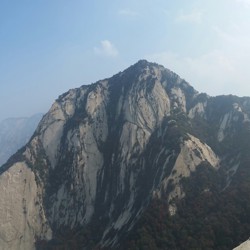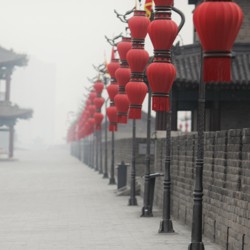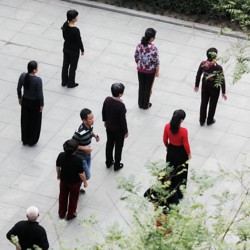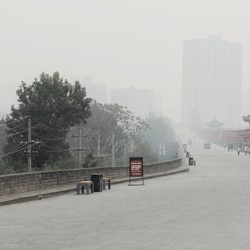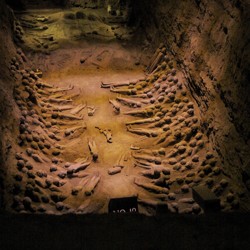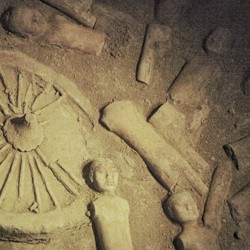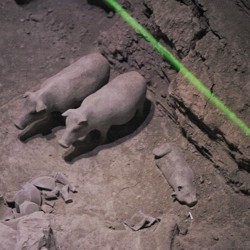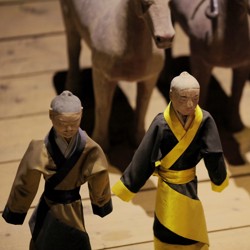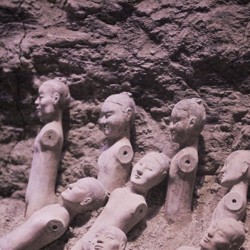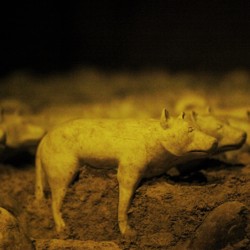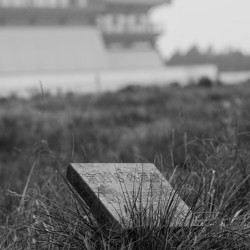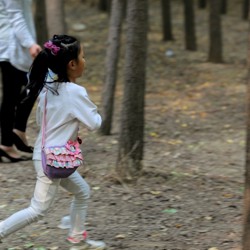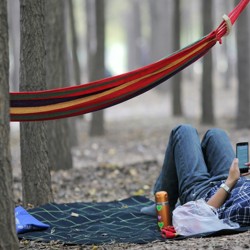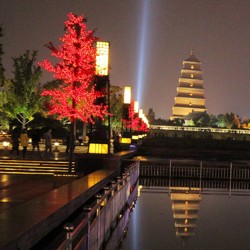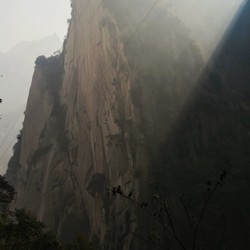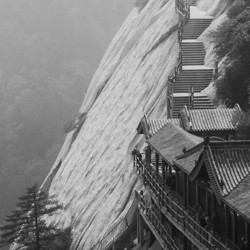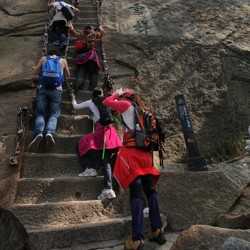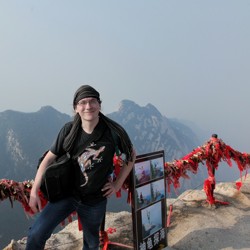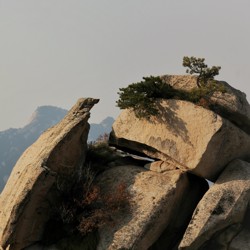19. October 2015
Xī'ān - Lots of Nice People

In my previous entries I often tried to describe the flair of a city a bit. For Xī’ān that’s not really possible to me, although I have stayed in this city for several days. But still I did not really explore the city as much as usual. While Xī’ān has much to offer on itself, for me the people I met here became the most important highlight in this city.
But first some facts about Xī’ān: Being one of the oldest cities and maybe the most important historical one in China – Xī’ān had been the capital of China several times – it has plenty of touristic sights. The most well known one is the terracotta army, but there is much more to explore. Several other tombs can be visited and one – the mausoleum of Qín Shihuáng – has not even been opened, yet. Xī’ān also has two famous museums, a huge city wall, a big drum tower, the big goose pagoda, the bustling muslim quarter and much more to easily keep you occupied for a week or more.
With this list in mind, it might surprise you to hear that I didn’t visit the terracotta army at all. But my intrinsical motivation being pushed and shoved around – I would have had to go on the weekend after all – was already a bit low and after having heard from a lot of fellow backpackers having been to this site already the statement “Yeah, it’s ok, but actually I was a bit disappointed since it was not as exiciting as I expected” in slightly different variations, I decided to drop it from my list altogether and visit the tomb of emperor Jingdi instead.
This tomb also sports a terracotta “army”, but of a completely different kind: Focusing on improving the life of his subjects, the emperor cut back on military expeditions, lowered taxes and reduced punishments. The tomb reflects his policies by not having life sized warriors, but approximately 50 000 small terracotta figurines, displaying the everyday life during his time. While the moveable arms and the clothes of the statues have decayed a long time ago, the remaining parts are still very interesting. And apart from the excavation site itself, the touristic site also has an exhibition hall and a gingko forest to visit (many families with children enjoying this). So, if you only have time to visit one site, I would recommend to leave the terracotta army to the touristic masses.
Now that you have learned a bit about Xī’ān, I would like to tell you a bit about some of the great people I met during my stay in Xī’ān. The first and most important one was Lei Lei, whom I met almost four years ago during my year at the National University of Singapore. While I had wrote her an email more than a month ago, I hadn’t received a response just until the day I travelled from Píngyáo to Xī’ān. As it turned out, she didn’t really use her old gmail address anymore due to it being blocked and it was a very happy coincidence that she checked the account just in time before I arrived in her home town.
Of course we had a lot to talk about after such a long time and together we visited the muslim quarter with its abundance of eateries and street vendors and also the Shaanxi History Museum. In the latter one we used the habit of most Chinese to follow the given path and skipped the first part about ancient China directly after the museum opened in the morning and went first to the later eras, being able to see the exhibition objects almost undisturbed.
After having had the hostel almost for myself in Píngyáo, I was glad to find a more busy one in Xī’ān. I met a lot of nice people here – too many to talk about everyone in detail – and it was nice to hang out with them in front of the hostel in the evening. On one of these occasions, Li – one of my room mates, who had lived in Xī’ān some years ago – invited Tony to our table. A charity group, founded by Tony, had organised a tour to this big city for a large group of children from the poor mountain areas and they also stayed in our hostel for this weekend. This project was all but a very small one for the Yellow River Soup Kitchen. Tony had been quite successful in his former job, until one day he decided that it was not what he wanted to do anymore. He casted away his old obligations and founded the charity group, which had grown over the years to a well known organisation. As you can probably imagine, he is a very interesting person and it was great to talk with him until late in the night.
For my final day in Xī’ān I didn’t really stay in the city itself. Together with Frank – an American who happened to study in China – I went to Huà Shān, another one of the Five Great Mountains (I already visited Héng Shān near Dàtóng). For ascending we took the Soldier’s Path – named probably that way since some soldiers of the People’s Liberation Army used it to capture Kuomintang soldiers by surprise – which is a sweaty way consisting of almost nothing but stairs to climb the approximately one thousand meters of elevation to the north peak (altitude: 1615 m). For around 50 meters you have to climb more or less vertical steps, every one being half as wide as your foot, with only some metal chains to hold onto. No wonder that this path was almost devoid of tourists! But it was a rewarding experience to reach the peak after a bit more than one hour, being complemented by other visitors having probably taking the cable car.
Although the weather was not really great for taking photos, the scenery was amazing during our hike to the other peaks (with the south peak being the highest one at 2155 m). While we had to skip the famous plank walk over a vertical drop of nearly 2000 m – not as dangerous as it sounds, since today you can wear a safety harness – due to time constraints, we had a lot of fun. We used the default trail to get back to the village and returned, surprisingly only slightly exhausted, after seven hours of hiking to Xī’ān.
To summarize the above, Xī’ān is a place you should not miss to visit if you travel to China. But although it has many interesting sites, I liked meeting all the people here the most and e. g. playing Chinese chess with the children from the mountain villages was at least as important to me as some of the touristic sites.
